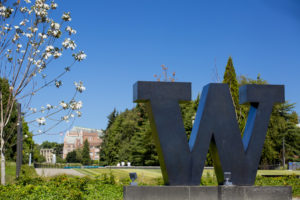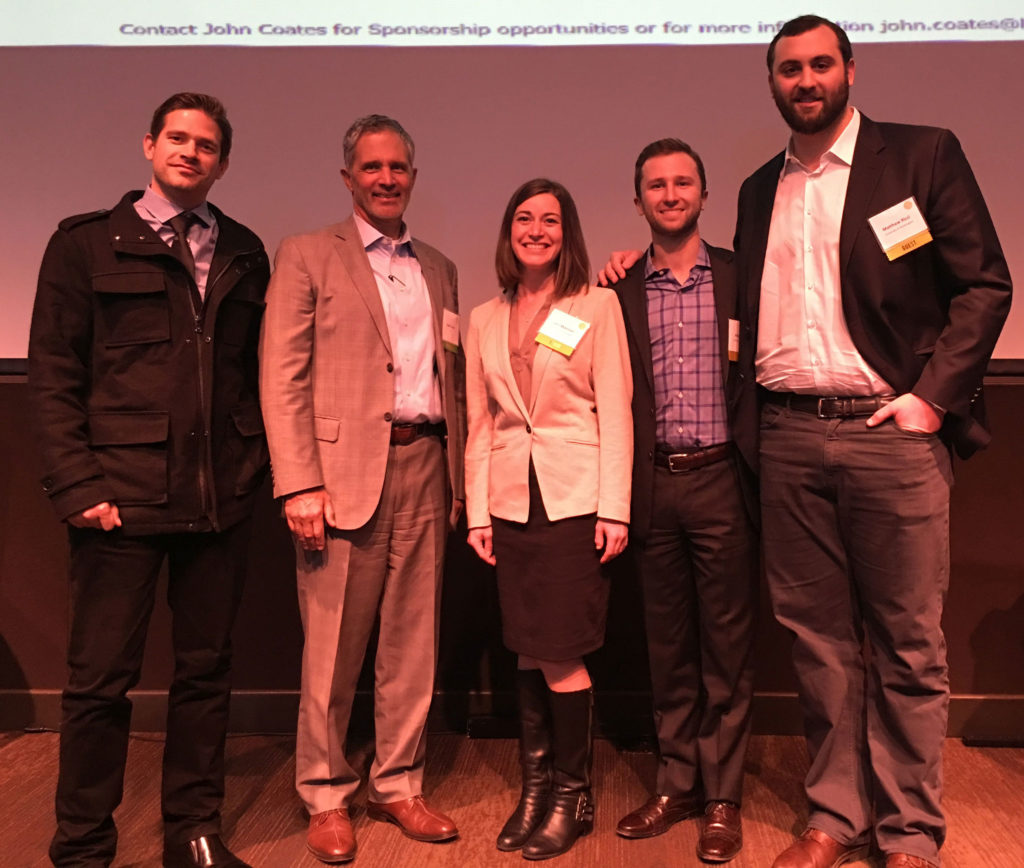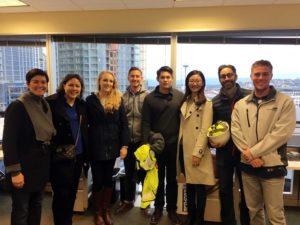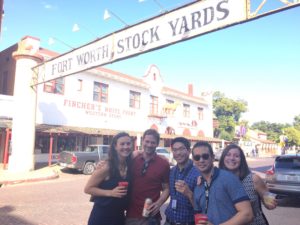The GRE/GMAT is not required for applications to the Master of Science in Real Estate in 2023.
For more information on applying to the Master of Science in Real Estate programs please visit our MSRE applications instructions page.
Category: Students
Lead with your heart
Runstad Center faculty member Deborah Scaramastra talks about the importance of using your heart when making job choices, read her Linkedin post.

2017 NAIOP Real Estate Challenge
MSRE 2017 Candidate Sean Durkin shares his thoughts on the NAIOP Real Estate Challenge. This unique competition is the framework for the Real Estate Development Studio, a course requirement for the development option in the MSRE curriculum.

This year’s NAIOP Real Estate Challenge takes University of Washington Runstad Center development-focused students to Coquitlam, British Columbia to compete against the Portland State University and University of British Columbia real estate development students.
The subject site, surrounded by heavy and light rail as well as a 20-terminal bus roundabout, is currently operated as a park & ride. It is owned by the Canadian government’s transit arm, TransLink, and is ripe for a re-imagination, the focus of the competition. The challenge includes aspects of public and private collaboration, new development analysis and underwriting, phasing, costs of construction, market analysis and forecasting, and financial feasibility analyses. Thanks to The Runstad Center, second year students have been well-educated in these aspects and will bring a diversity of ideas and work experience for a responsible, transit oriented, development. With foreign tax laws and market cycles, Greater Vancouver offers students an unfamiliar market to enthusiastically tackle.
Under the direction of Runstad professors Al Levine and Pike Oliver, students are responsible to gather and verify market data and site information in order to deliver an economically viable development project that will beautify the transit station and rider’s experiences, continue to offer park and ride potential, benefit the community, and attract a for-profit developer.
With UW being four-time victors of this 14-year development competition, competition is high amongst the class with three internal teams independently developing a plan of action. Students will vote on the most viable work and unite late in the quarter to all work on finalizing the design and deal structure that serves TransLink, an outside developer and the community best.
Are you on the Washington Chapter NAIOP email list? Look for the blast email from Seattle’s NAIOP chapter to register for the Seattle March breakfast event where teams from each school will present their proposals and a winner will be announced.
The buzz is out about the upcoming minor in real estate
Jill Wood, Co-President of Windermere Real Estate and Runstad Center Advisory Board member, was recently quoted in a story about the new real estate minor. Read the full article here Two undergraduate courses will launch spring quarter: RE 400 Real Estate Accounting and RE 360 Intro to Real Estate Market Analysis. Please contact msre@uw.edu for more information about registering.
New Undergraduate Initiative in Real Estate
Thanks to a generous endowment from the Jacobi Family and Windermere Real Estate the University of Washington is launching a series of undergraduate classes in real estate. The Director of the Runstad Center for Real Estate Studies, Professor Simon Stevenson, who also holds the John and Rosalind Jacobi Family Chair, described the initiative as an important part of the long-term development of the Real Estate program at UW.
“The development of an undergraduate minor is exciting in many respects. It will complement the well established MSRE program and will also open up real estate and the associated career possibilities to UW’s undergraduate student body. The first class started this quarter and from a standing start it already has over twenty students enrolled. The Intro to Real Estate class will be followed by a Market Analysis course in the Spring Quarter. As more courses are rolled out over the next two years this will develop into a fully-fledged minor in real estate. Everyone in the University of Washington’s College of Built Environments would like to extend our thanks and appreciation to Windermere Real Estate and the Jacobi family for their support and help in developing this exciting initiative”.

2017 CoreNet Recipients
On Tuesday, CoreNet recognized the 2016-17 scholarship recipients at their January luncheon. Congratulations Eric Jacobs, Lori Shannon, Adam Boyd, Matthew Ricci and Tak Stewart.
We are so grateful to the CoreNet Seattle Chapter for their continued support of our students.

Runstad Center Mentors
Runstad Center mentor Joe Polito recently took his mentees on a project tour of Tilt49. Tilt49 is a mixed-use residential and office property, under construction in the Denny Triangle. The project includes 11 floors of office with 31,000 SF floor plates, a 7,000 SF deck on level 9 and a lobby featuring food retail and other “pop-up” retail spaces. Kristen Jensen from Touchstone, Kyle Paulsen and Ian Knowles from Mortenson Construction lead the tour. Our mentors are an invaluable resource for our students, providing career path advice and hands on exposure to real world projects. Click here for the bios of all the 2016-17 Runstad Center mentors.

The ULI Fall Meeting, a great networking experience
MSRE Candidate Eric Jacobs recently attended the ULI Fall Meeting and shares his thoughts/fears on networking, a necessary skill in the world of real estate...
“Networking” has always been a bit of a scary word to me. It conjures up images of awkward conversations, exchanging business cards with strangers and trying to “sell” oneself. Those aren’t situations where I tend to be comfortable. The ULI Fall Meeting promised to be chock full of those sort of interactions so I had a certain amount of trepidation going into the week.
Thankfully, with the help of the MSRE staff and my friends and classmates, I never felt the need to put myself into awkward situations. Instead, I was able to “customize” my networking experience into situations where I felt comfortable and confident in my ability to put the best (and most genuine) version of myself forward.
Starting the week off with a tour worked well as it allowed us to meet people in a relaxed setting, whether watching longhorn steer being herded down a Ft. Worth city street or sampling a variety of Texas whisky at a cool outdoor bar. I made friends in a relaxed setting with natural conversations about who we are, what we did, where we were from and our differences and similarities. As other people from the group were doing the same we were constantly being introduced to new and interesting people.
As the week went on, different events were set up during the day where we met local real estate leaders and essentially got to grill them for helpful information. We could ask as many questions (or as few) as we felt comfortable. It was another great way to get to know contacts who could be a big help now, or down the road.
Finally, our last night in Dallas we headed out to a northwest networking event. Our little crew of Washingtonians piled into a random limo, jumped onstage and sung with a local bar band for a song or two and generally engaged in the sort of good-natured shenanigans that create lifetime bonds.
When I got home I thought about the great time I had before realizing, much to my chagrin, I had been networking the whole time. Oh well. Thank you so much to the staff and sponsors that made this trip possible for all of us!

The M-Line Trolley
While at the Fall 2016 Urban Land Institute Meeting in Dallas, I encountered an unexpected and delightful transit mode. The nostalgic M-Line trolley links the downtown Dallas Arts District with the trendy shops, galleries and bistros of Uptown, including West Village, where you can transfer to or from the more modern Dallas Area Rapid Transit rail service at the Cityplace/Uptown Station. An additional connection to DART Rail is available with the completion of an M-Line extension along Olive Street through Klyde Warren Park to near St. Paul Station. It reminded me of the waterfront streetcar that vanished from Seattle’s waterfront a decade ago.
Pike Oliver
Runstad Center Faculty
Investing and creating communities to love
Pike Oliver continues his impressions from this year’s ULI Fall Meeting with a summary of Sarah Filley’s session.
Ms. Filley explained “Cities like Oakland are the most vulnerable to recession, where it hurts the most and lasts the longest,” she said. In 2011 Oakland’s downtown had 35 percent retail vacancy. But there was an active monthly arts festival drawing 25,000 people on a single day. The idea of Popuphood was to connect artists with vacant retail space.
To watch a video of Sarah’s presentation click here